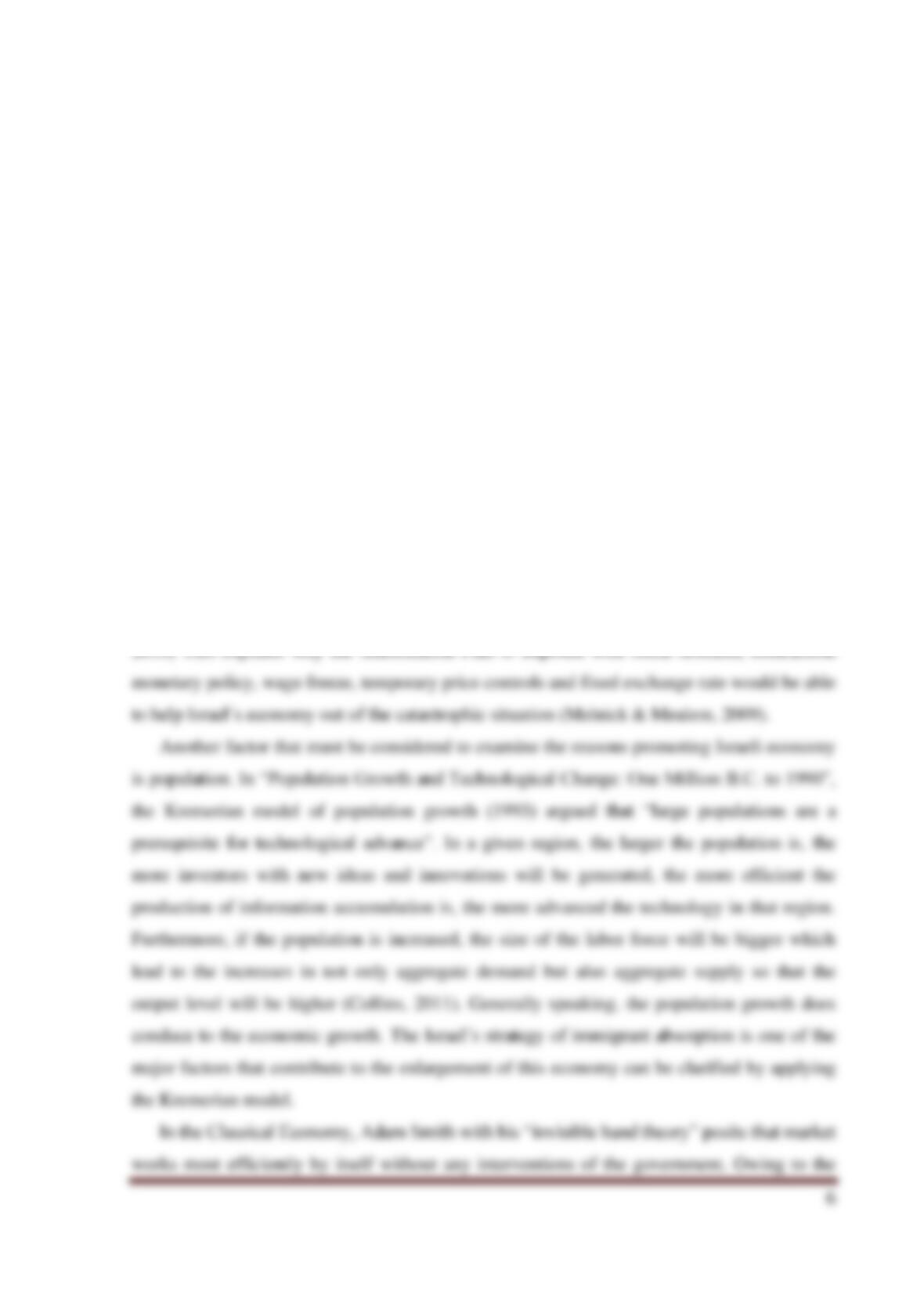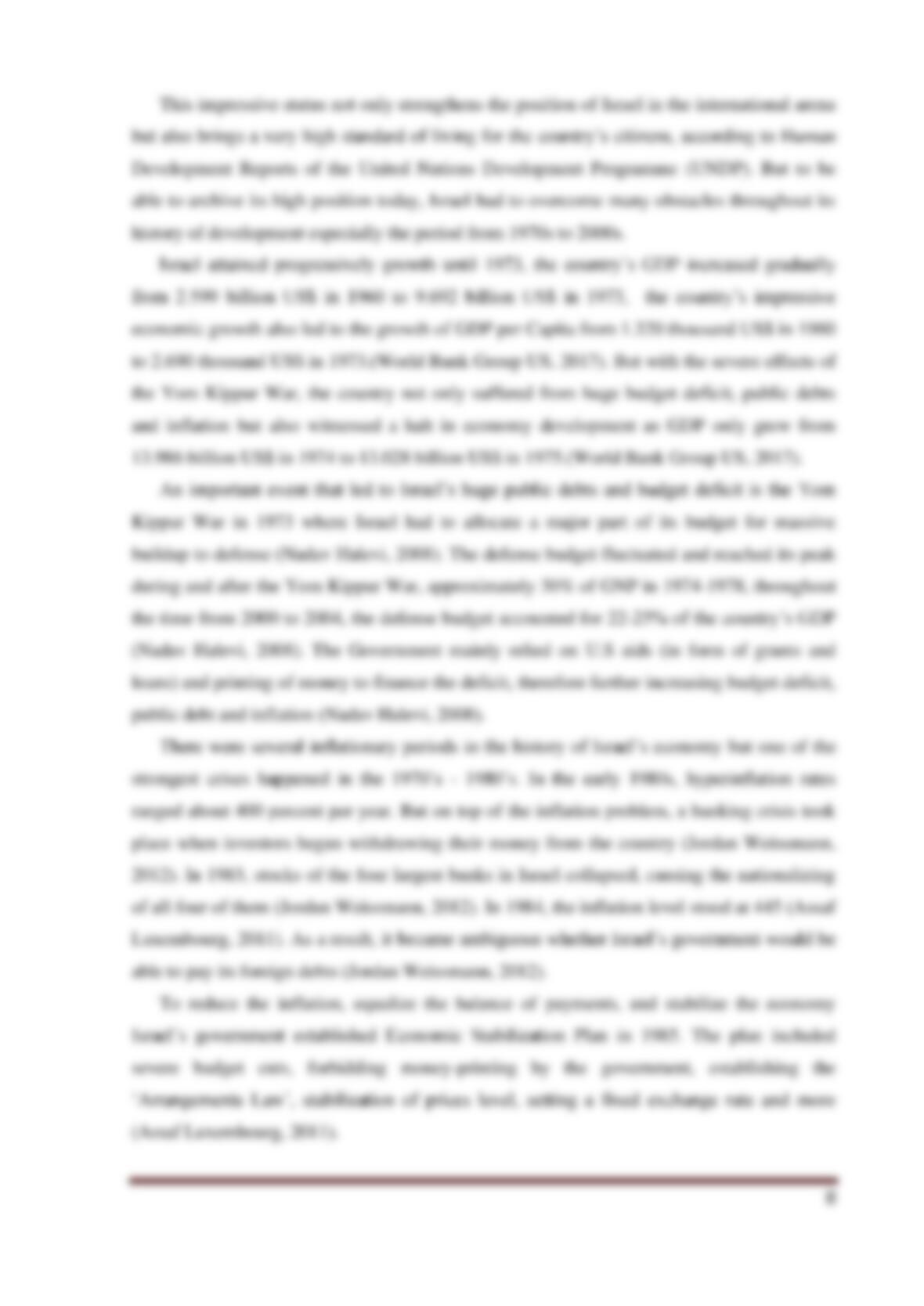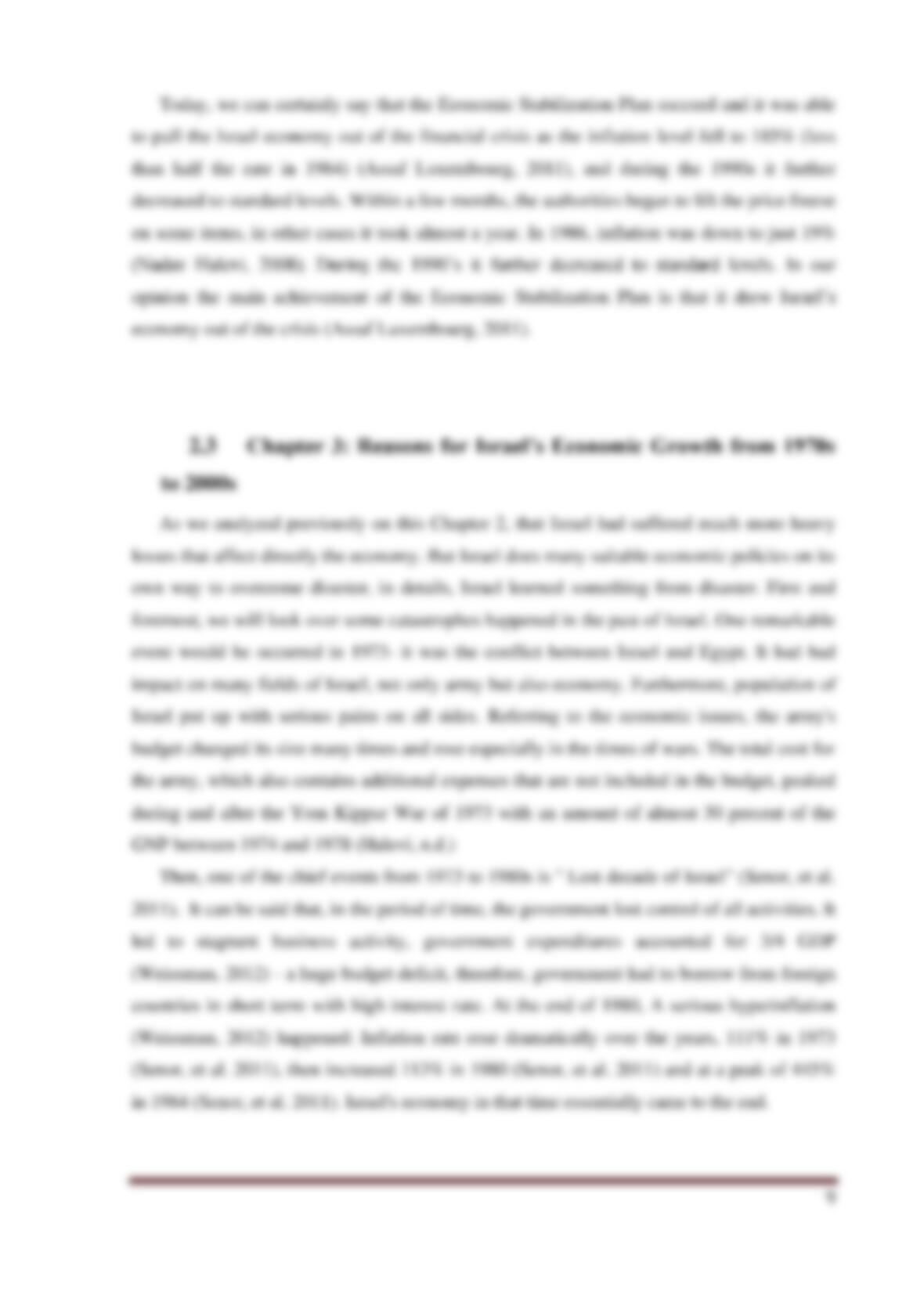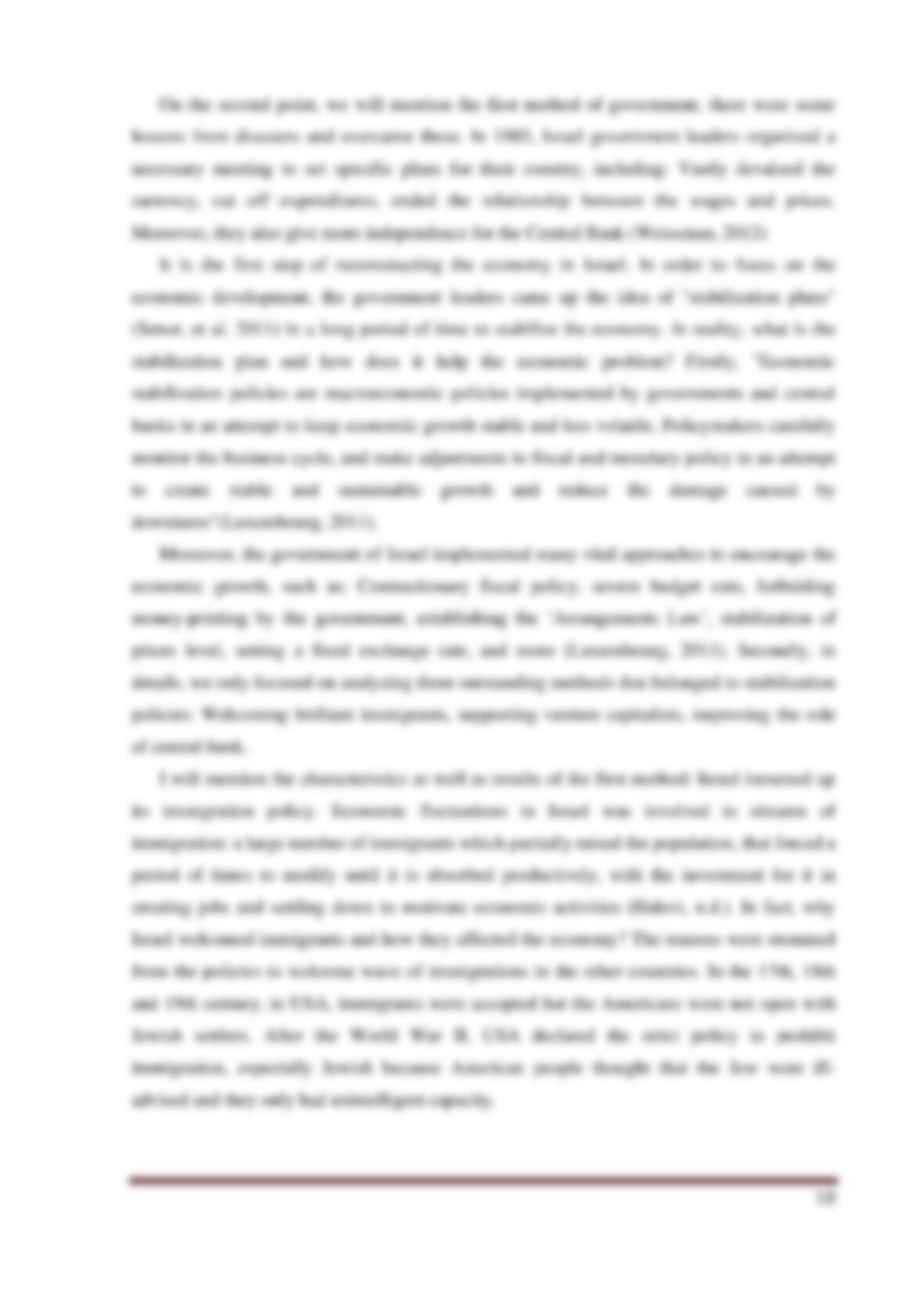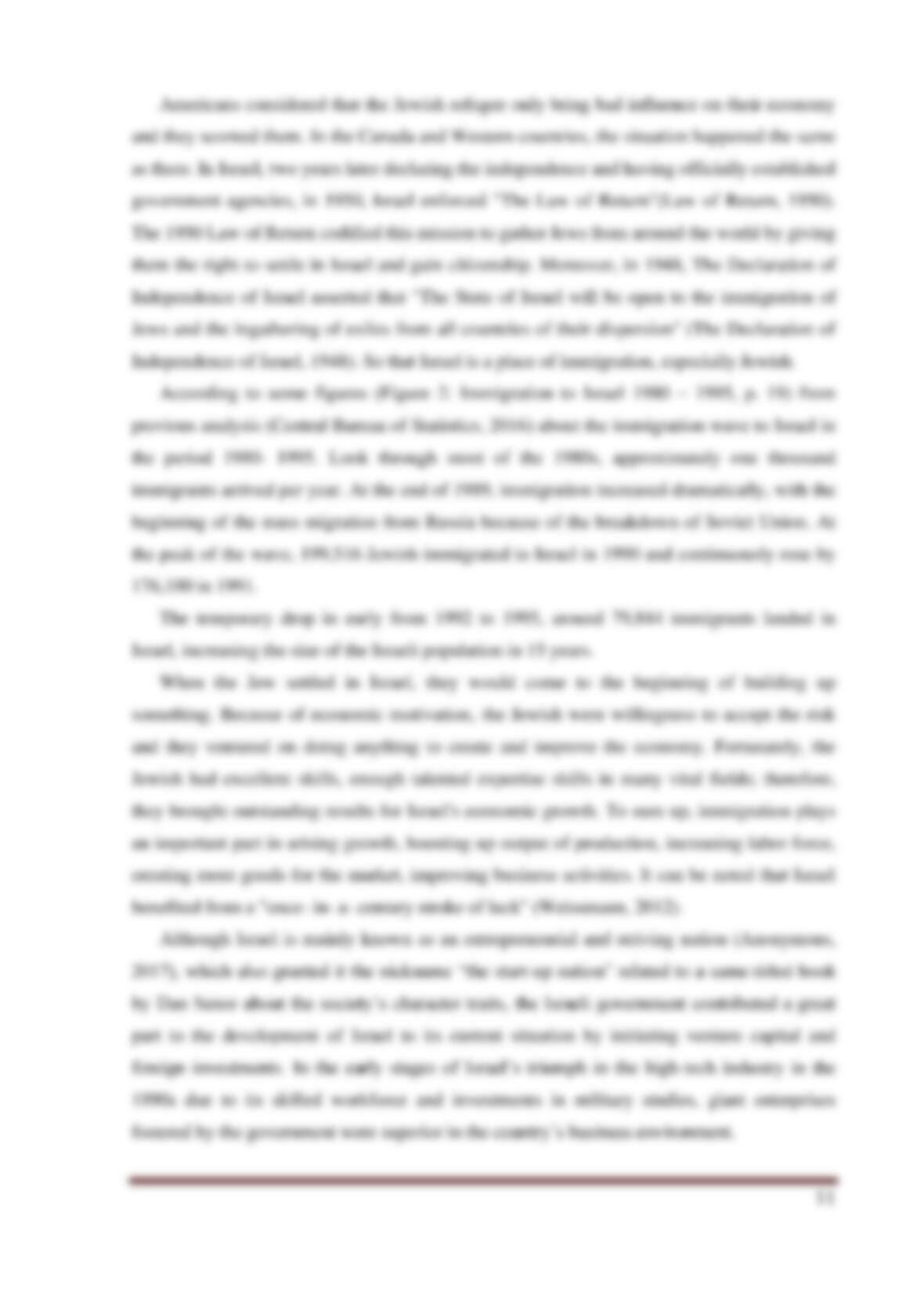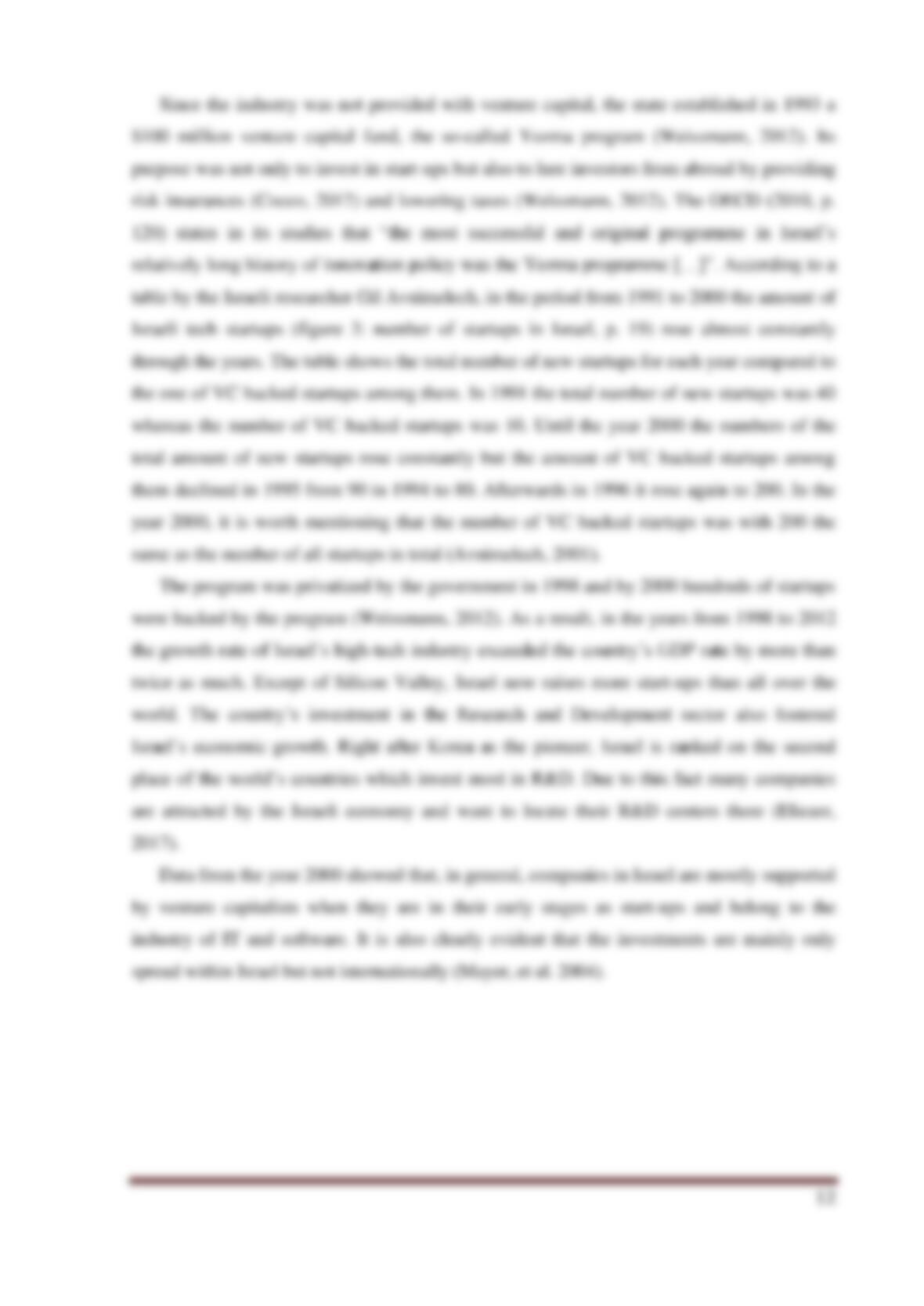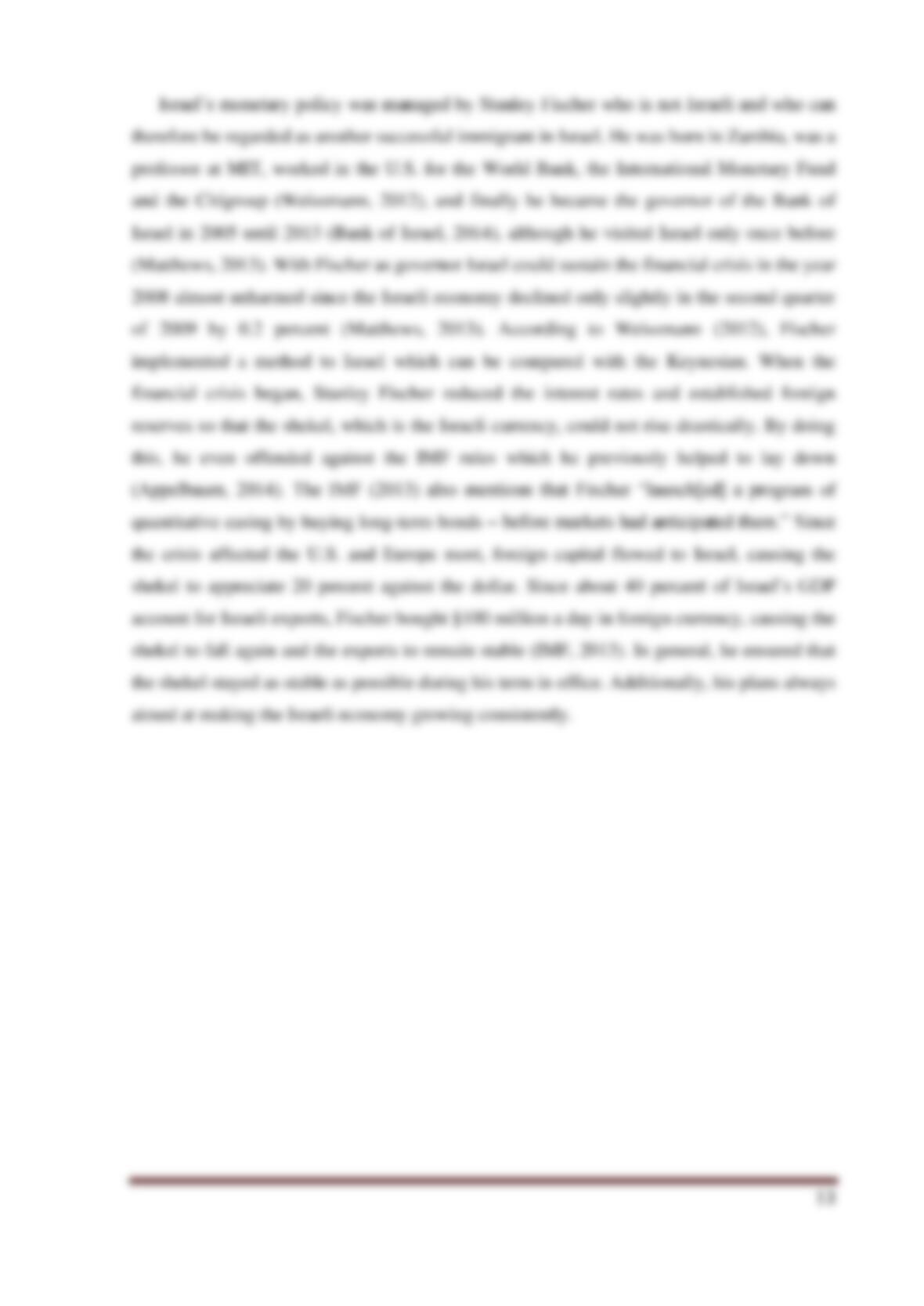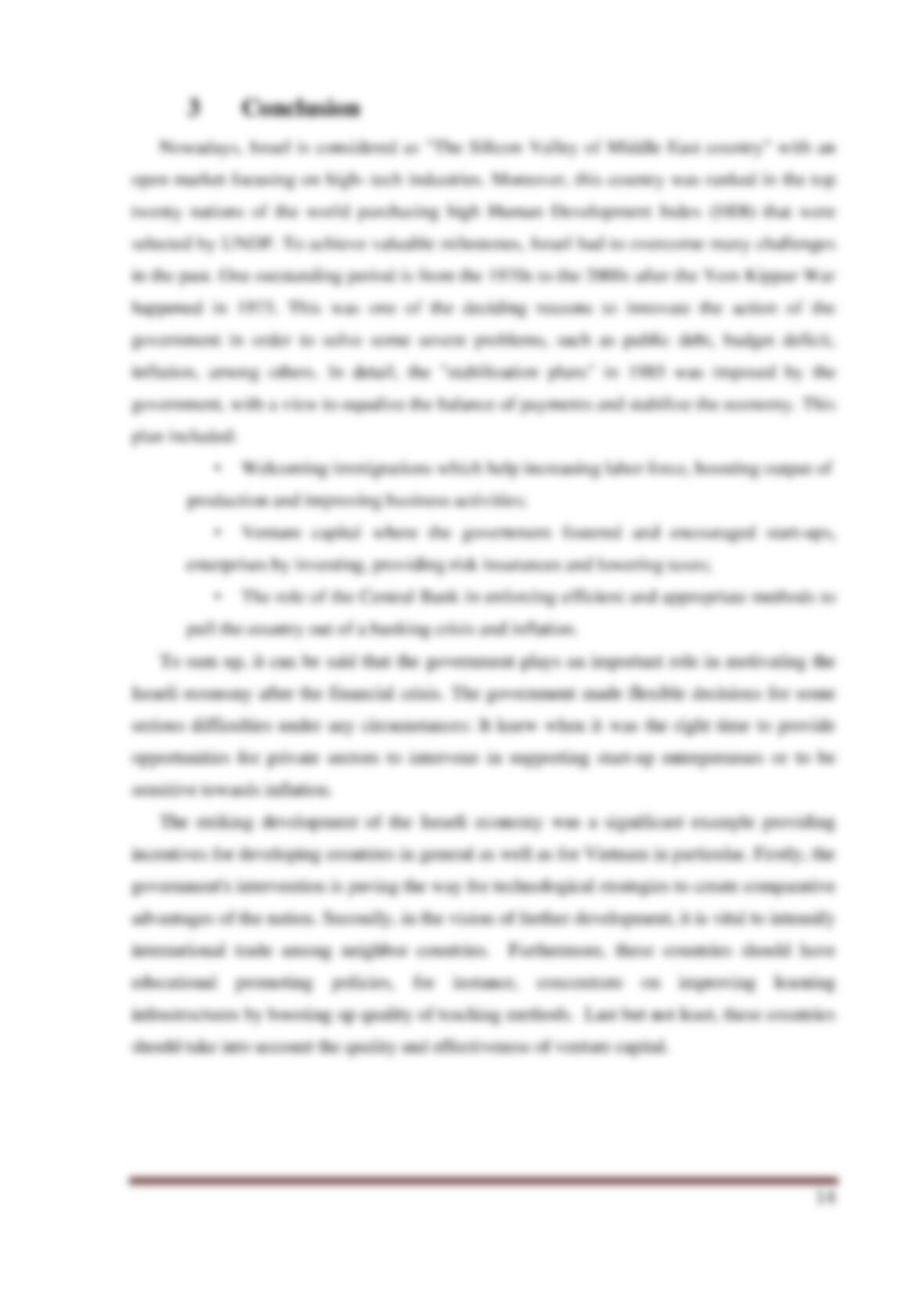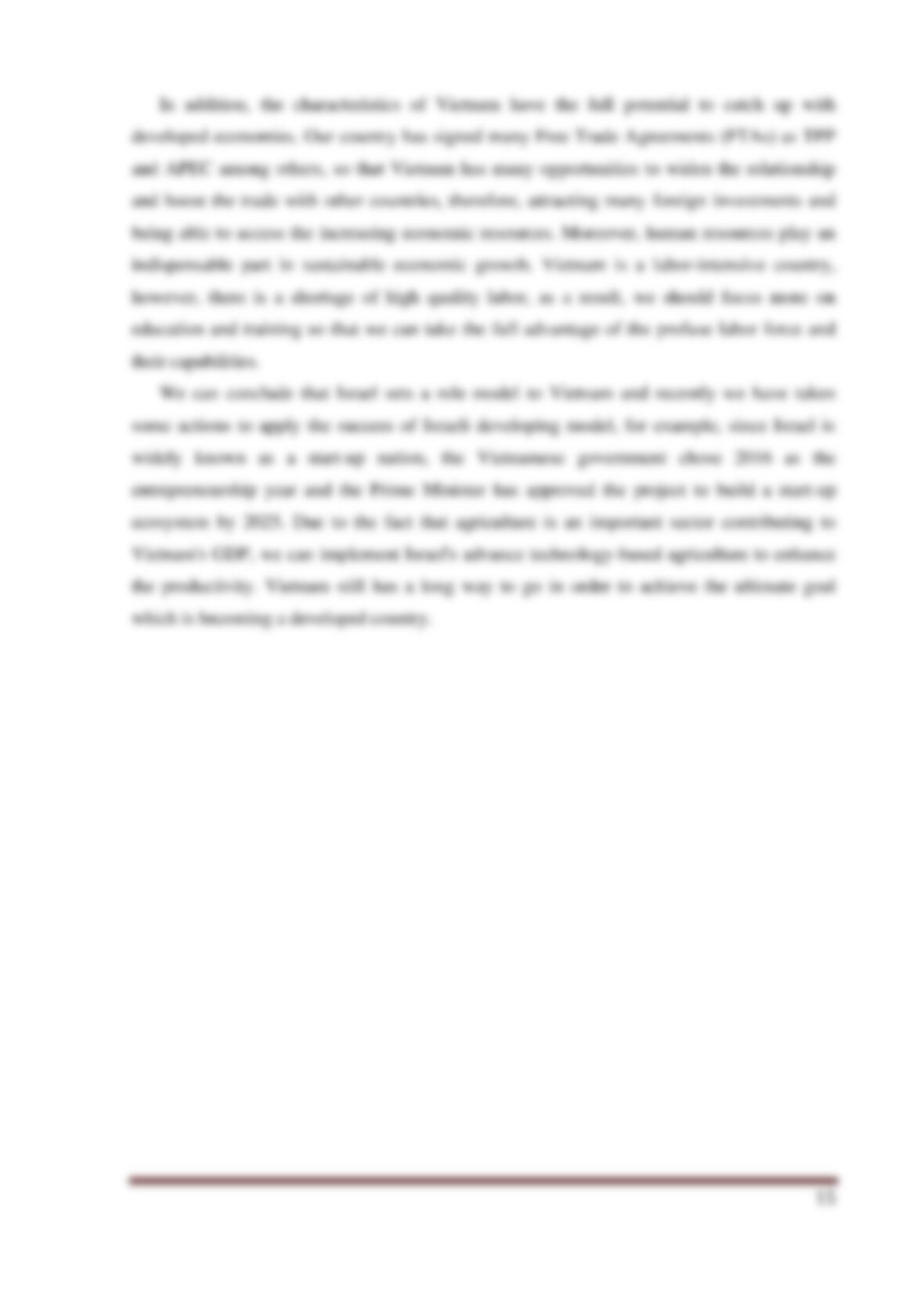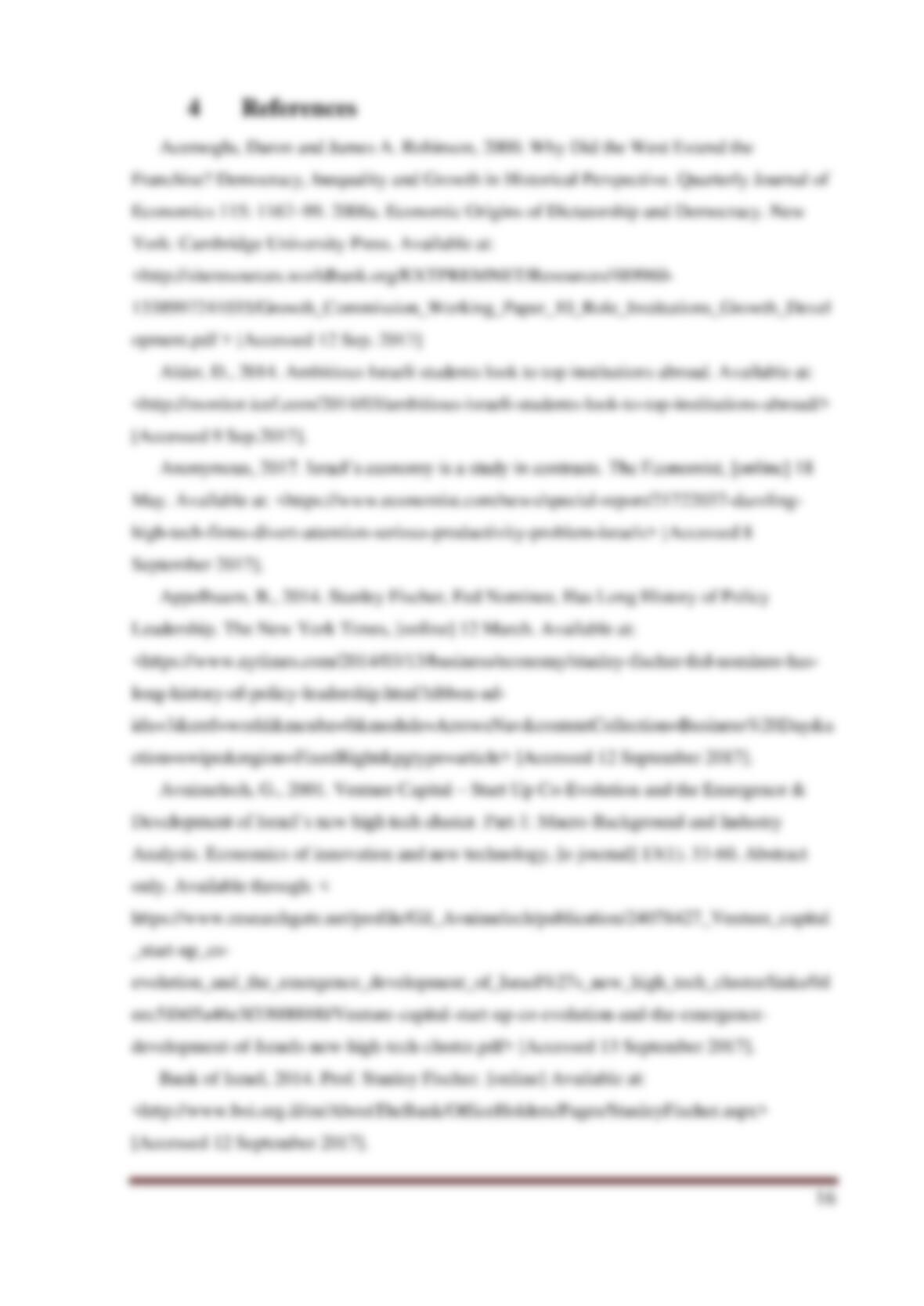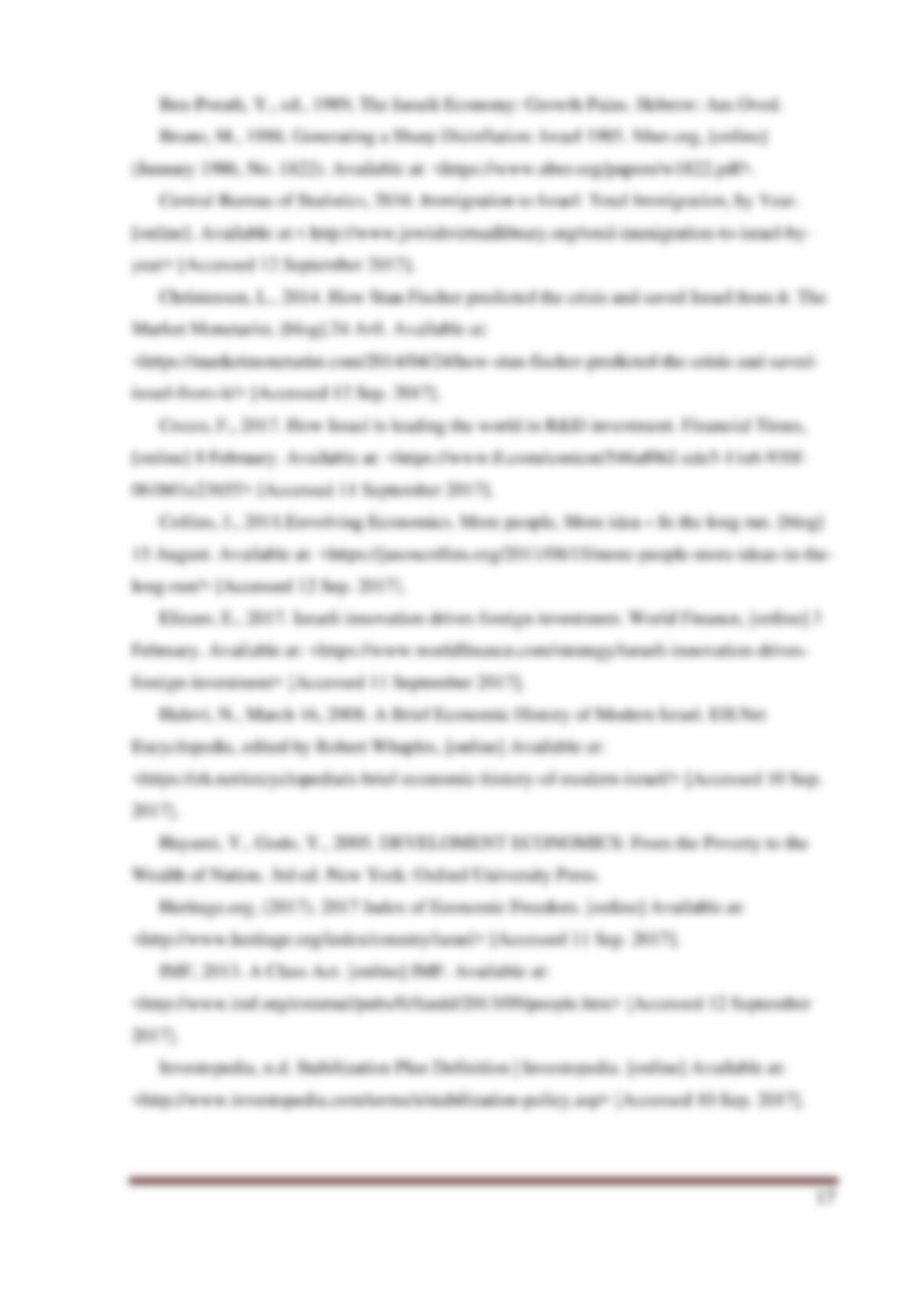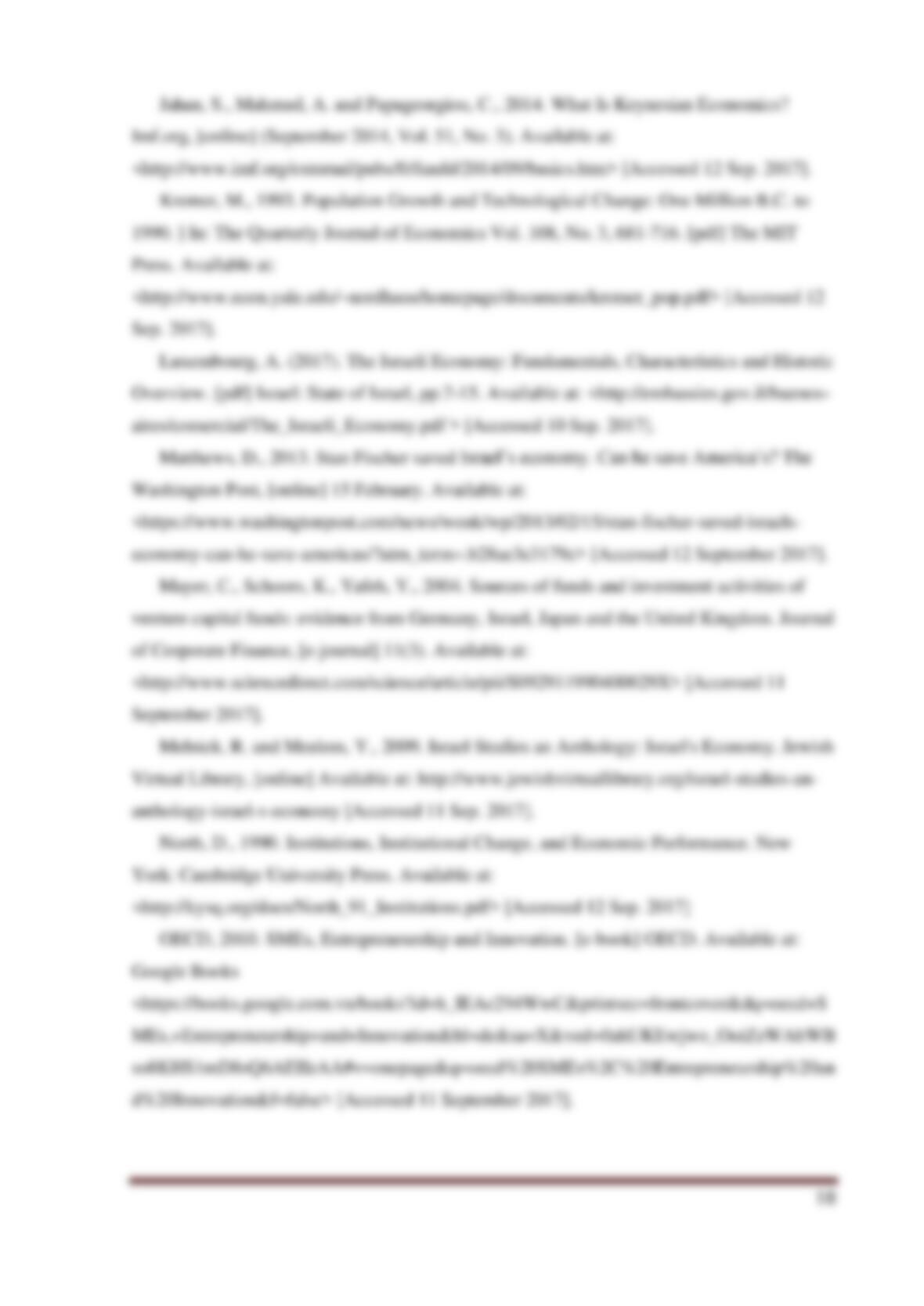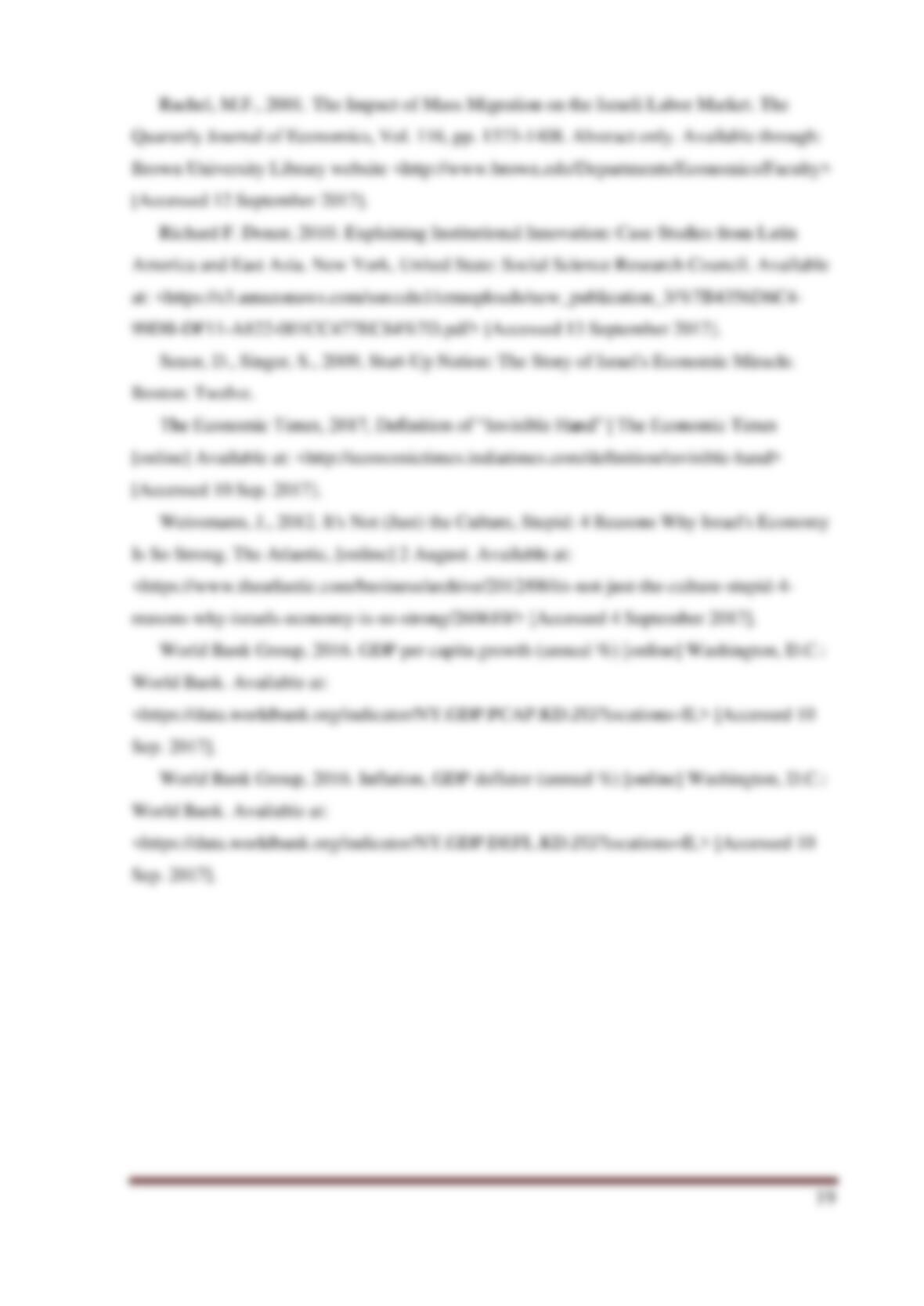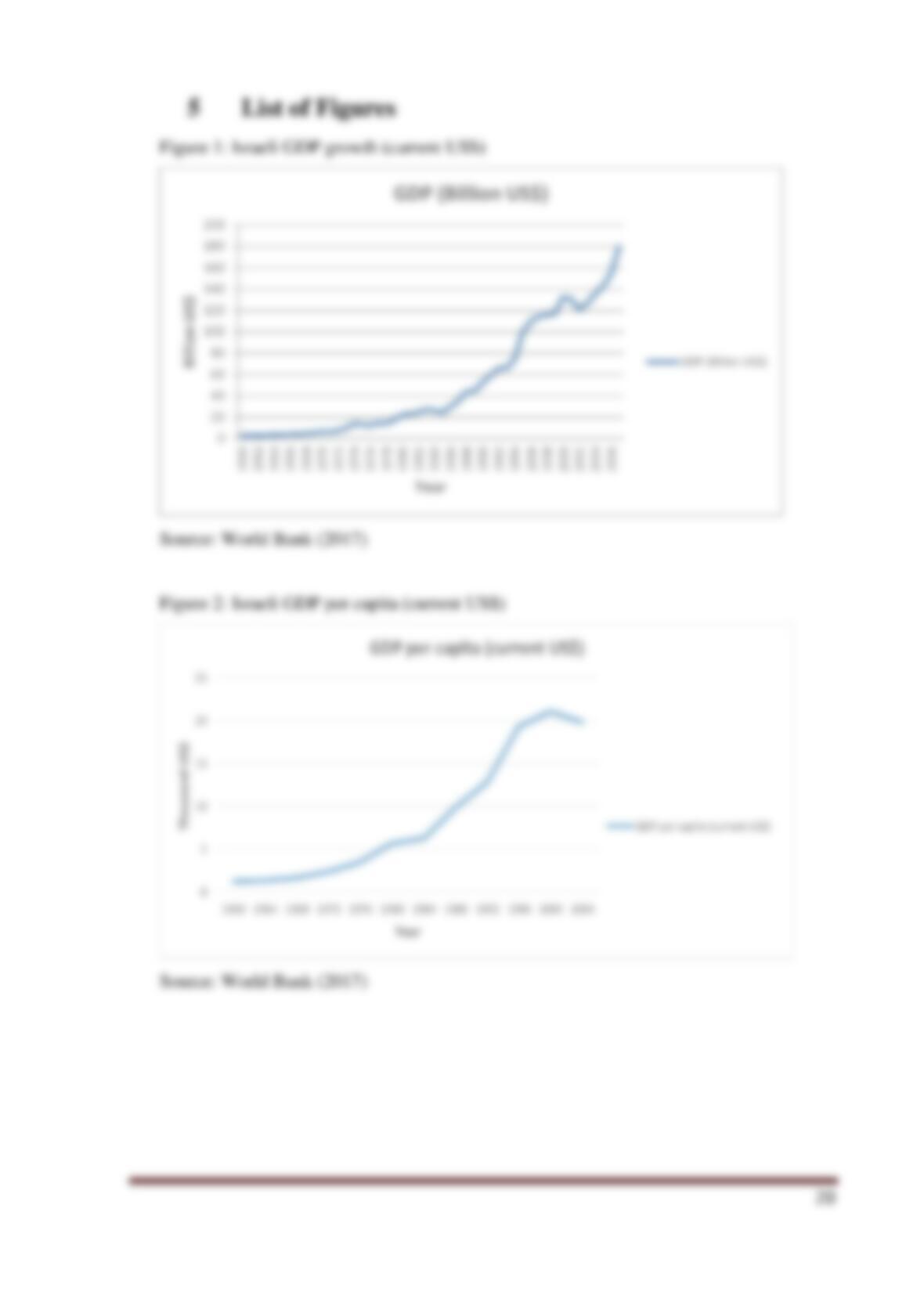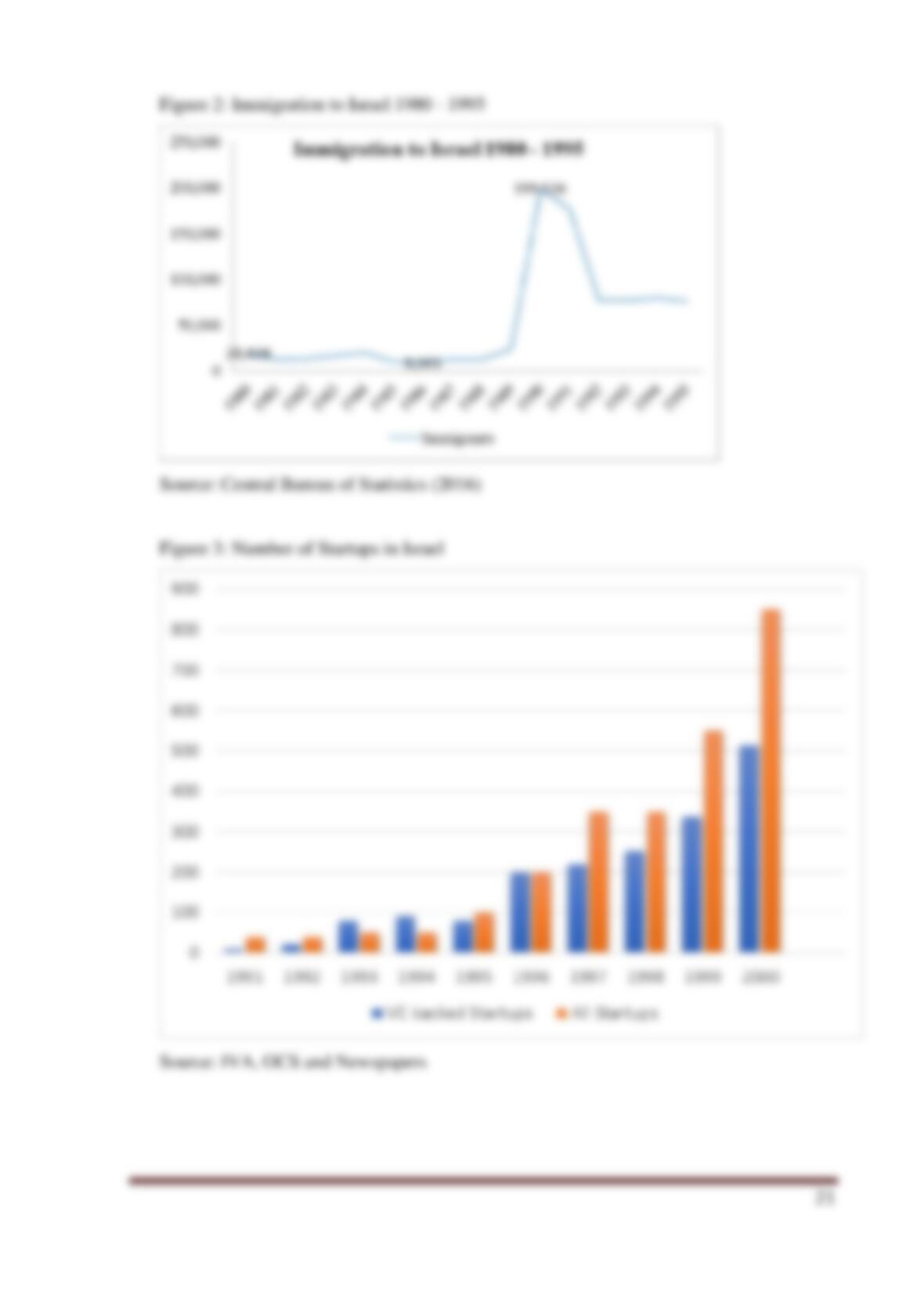4
2 Content of the Study
2.1 Chapter 1: Models explaining Israel’s Economic Growth
The state of Israel was first officially established in mid May 1948 (Nadav Halevi, 2008).
In its first two decades of existence (1948-1973), the Israeli economic growth rates exceeded
10% annually (World Bank, 2016) which is the result from its strong commitment to
development. However, since 1973, there was the “Lost Decade” of the Israeli economic
history, as the consequence of the oil crisis simultaneously with the Yom Kippur War in
1973, the government deficit grew significantly due to the huge defence spending and in an
effort to finance the huge budget deficit, the Bank of Israel printed money which accelerated
the inflation rapidly (Melnick & Mealem, 2009). In 1984, the inflation rate was nearly 400
percent - the level bordering on hyper-inflation (World Bank, 2016). The situation became
worse when foreign investors evacuated their money leading to the “banking crisis”
(Weissmann, 2012), whether or not Israel would be able to pay its debt and deal with the
current account deficit became unclear so the economy was on the brink of collapse in
financial and foreign currency markets (Ben-Porath, 1989). However, in 1985, with the
implementing of the stabilization plan, a macroeconomic strategy carried out by governments
and central banks to reduce the severity of economic fluctuations (economic growth, price
levels and unemployment) in the short run (Investopedia, n.d.), and the market-oriented
structural reforms, which are enacted in order to reduce the government involvement in the
economy, the Israeli economy was restorative and continued to develop (Bruno, 1986)
(Melnick & Mealem, 2009). Since the establishment of the state, many alterations happened
to the structure of Israel’s economy unrecognizably. This study is aimed at analyzing the
economic growth of Israel between the 1970s and 2000s with the support of following
economic theory and model.
First of all, according to Hayami and Godo, the model of dialectic social development is
developed to conceive “how such technological and institutional changes are interrelated with
each other, how they respond to changes in resource endowments, and how such responses
are governed by cultural tradition” can be applied to explain why the Israeli economic
structure had to change and how the changes affect the economy in the country. “Model of
dialectic social development is a model of the evaluation in social systems through dialectic
interactions between economic and cultural-institutions variables.” (Hayami & Godo, 2005).
